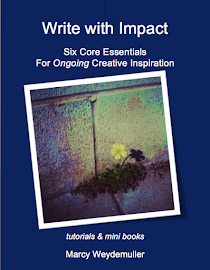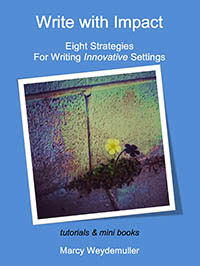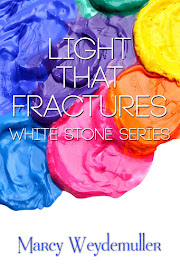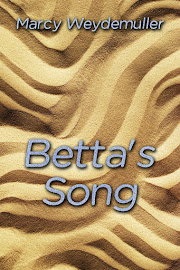skip to main |
skip to sidebar
“You enter the extraordinary by way of the ordinary.” ~Frederick Buechner
 “The tourist may look at a place and think ‘What does it do? What is it like? How much does it please me?’ but the fiction writer must look at a place and think ‘What does it suggest? What does it mean to me? What does it mean to my characters?’” Jack Hodgins
He suggests that in order to achieve this perspective, a writer needs to construct a place—“real or invented”—rather than describe it. By choosing specific details you both impress the landscape on your reader and connect them to the meaning of your world. Here’s part one of an exercise I sometimes give my workshop students. Write a brief few sentences about a character hanging laundry on an outside line. Seems pretty ordinary—perhaps even a little dull. At the moment it is only a beginning point of a possible reality giving perhaps character and place, but not yet a voice; and perhaps curiosity, but not yet an authentic emotional connection. However I have yet to have any sentence even come close to matching another as each writer chooses the unique aspects that interest them. The character: boy, girl, man, woman, human or alien—what kind? Are they bored or anxious? Normal chore or forced labor? Hangs laundry: how by old-fashioned string and clothes pegs, or by magic, or electronically? Is it a difficult chore or easy. Outside line: where—isolated mountaintop, crowded slum, space ship balcony, or cookie cutter suburb? Is it dark outside or light? Windy or not? The chosen detail for each key focus brings up several shapes to a simple sentence.
Exercise: Write a brief sentence or two, “A character goes outside to feed an animal.”
Share: Post your first sentence. Next week I’ll add the part two.
 Even when the glass is smudged, a mirror reflects an image. So too do memories, even though sometimes they shift and blur like a house of mirrors giving a distorted emphasis. But then we can filter and process and hold onto the parts that have meaning. “A fantasy novel is more than an adventure or a quest. Rather it is a series of image-repeating glasses, a hall of mirrors that brings past and future into focus and calls it the present.” Jane Yolen And this series of repeating images also connects with us in our personal histories, our personal daily adventures and quests. They’re not always easy to grasp though because of other influences and often jaded opinions. In the movie Larry Crowne, Larry’s navy experience is dismissed by a thoughtless co-worker as irrelevant because of him only being a cook. Yet when Larry himself finally has the opportunity to share those memories in a safe environment, we see what an enriching life that opportunity gave him. His memories hold his audience rapt as he shares traveling the world, crossing the equator, and seeing the Northern Lights, places we often only see in magazines and television. He lived it. And with humor he also shares peeling potatoes, serving up pasta, and doing dishes. Day-to-day adventure. His perspective takes that particular season of his life and then holds in his memory the parts that matter, the parts that make him real. It has focus in the present.
Journal Prompt: 1. Take a memory your main character has from childhood that she remembers with extreme fondness. Then have a relative turn the actual memory upside down. What impact does that have? 2. Repeat with a memory that causes fear.
 There are three main obstacles to our writing goals: Perfectionism. Fear. Procrastination. When we develop an ongoing creative process, we can sidestep all three. Our world building becomes an exciting place that we desire to spend time in, instead of an overwhelming dilemma. Questions: Who, what, when, where, why, and how. Exercise one: Go back to your free-write and apply these questions to the character of the city. What do you know? What don’t you know? Make a list for further research on missing parts.
Letter: Write a short letter either from your character or to your character. Exercise two: Choose the city you loved the most from the earlier list and have your character write to a person in that city, or receive a letter from a friend visiting that city. Or make it impersonal as if a business assignment.
Application Writing Assignment: Choose a few details from each of your exercises, mixing and matching theme, setting, and memory. Now write up a short episode as a brief memory of your character. It can be either from the POV of this was once her home or as a visit to a strange place. If you started with an imaginary place in the first city free-write, it now has real footprints. If you chose a real place, it now has a personal emotional connection to a real person, and if you also added some details from another city, then you have a real place—only different. Share: Which brainstorm techniques worked best for you? Which were the most difficult? Why?
 Here are a few more techniques to apply to reach the heart of your worlds instead of staying on surface description. I strongly recommend that all the brainstorming be done by hand whenever possible. Why? For one, working by hand supposedly shifts our attention into a more creative mode. Second, more importantly, it becomes portable. Each of these methods, apart from journaling, can be done in 2 to 10 minutes. Think of them as ongoing creative breaks through your day. And if you happen to have a job/life that literally will not allow you to write every day, you can still brainstorm every day, so that when your computer time opens up you are ready to write without needing warm-up or re-entry time. Your novel stays fresh. For those of us slow dreamers who tend to procrastinate, we will have a stack of snippets ready to develop. No lost time. It helps prevent writer’s block, because we’re not really writing—we’re exploring possibilities. List: Make a list. Set timer if you want. Minimum two minutes, but I suggest five. Exercise one: List ten to twenty cities that you have visited that you absolutely loved, or would love to visit if you had the chance. (Can also repeat for those you hated.) Go back through the list, and next to each city write one word that captures that city’s memory for you—why you love it: Architecture, food, felt free, fell in love, etc. Scratch List: Make a few categories and combine common factors under each. Exercise two: Look at your city list so far, and see if there are any common factors. Separate accordingly. Does one category contain many and another a few? Why? Make a note of what makes two favorite cites land in different categories. Share: How many creative breaks were you able to add into your week?
 Author Dallas Willard says that “we make the decisions that determine what we will do and who we will become” through our “lifescape,” the thoughts for our will and our life. Often our lives are moving so fast that we don’t often stop to check out this life-map to notice whose agenda we’re on. Not until there’s a major bump in the road, and even then we can be coaxed to continue on a route that is detrimental if we don’t stop and re-evaluate. In the movie Larry Crowne, after a period of hopeful job searching, Larry realizes that he can no longer afford his home and goes to the bank to release it. However, the bank manger insists Larry sit down with a ‘free’ (exaggerated) cup of coffee to talk it over and ends with Larry still owning a home he can’t afford. He has accepted her thought position and bowed to her cheerful pressure. However several weeks later, after studying a basic economics class at the junior college, he spends an evening going through all his papers, chooses an envelope, drops in a key and the next morning hands the package to the bank manager telling her that he will vacate the premises within thirty days. As he strides away she still coaxes him to come and have a “free” cup of coffee to re-consider. The first encounter increased his confusion and depression. The second released him from a burden he could not carry. Although his job loss instigated the situation, Larry’s new perspective enabled him to see that he himself had made choices for the wrong reasons and then allowed others to determine his personal map. Now he was setting a new course for himself based on emotional and financial honesty.
Journal Prompt: 1. Choose a situation for your character outlining a course of action that is not beneficial to them. How does a family member, or work associate, ‘sell’ this course of action to them in order to serve themselves? 2. What knowledge will your character need to see the real “lifescape”?
 Brainstorm basics help us to filter through the possibilities before we pour hours into world development. There are so many different ways to brainstorm, and we all have our favorites. In addition to all the normal reasons for creative brainstorming, there are three that I think are particularly important for world building. First whether we ground our novels in a real world or an imaginary one, the specific places are different from normal, or at least a perception of normal. That is a key factor. We need to find the bridges to connect our readers to live and breathe in these worlds with our characters. Brainstorming in world building helps forge that metaphoric link between real and imaginary without saying which is which. Brainstorming throughout all the drafts makes that happen. We do the overview general sweep in the beginning, and then throughout we stop often and do microscopic investigation. This keeps the water from the well flowing with freshness—not dried up with overused generic templates, but rather with unique, interesting and tempting places, situations, and characters. Second, one real difficulty with the scope of our worlds is the ability to drown out character, plot and theme. The sheer weight can even overpower us. Taking time to brainstorm helps us choose which details we need to highlight, which we need to keep as background, and which to just plain ignore. This brings up the third main reason, research. When we brainstorm before each particular research area required, we save hours of time. We also protect ourselves from following possible bunny trails that could lead us away from our main goals. Because we love to build worlds, it’s a real temptation to get lost in the preparation. And it’s a balancing act too, because we don’t want to miss out on serendipities either. Cluster: Take a word and place it in the middle of a page and then make spokes from the word to bubbles with word associates. For each of the words you choose repeat the process. Go out as far you can. Exercise: Choose a word or a thought, either for theme or potential research, from your free-write last week and cluster out all the ideas as far as you can. Share: How far did you get? Which brainstorm of the two generated the most material for you?
 While most metaphors lean towards subtlety building to a slow realization, there are times when the use of social and culture images can startle an audience into looking at the familiar from a new approach. Most often the iconic type metaphors are used as shortcuts to set a theme or atmosphere, such as a John Wayne style western set or a New York cityscape. We enter the story with certain expectations. However—what if they don’t mean what they used to? The movie Larry Crowne adds an extra layer of vocabulary through its use of social Americana metaphors spread throughout the visual setting. The scooter posse rides motorcycle style through the streets hitting their various stops. On one street they then pass by a ‘traditional’ motorcycle gang who waves to them. Larry’s neighbor operates a yard sale that covers almost his entire property and runs on a daily basis. A junior college class only requires ten students in attendance to remain in the schedule. And then shows the disparity between one class in one small room, barely functioning, and another auditorium size packed with probably four hundred students. None of these experiences are examined or explained. Different generations may look at each view or circumstance from an entirely different perspective: some humor, or sarcasm, or sadness, or confusion. Nothing is as expected and what is expected is turned around. Although movies have an advantage by silently sharing cultural metaphors, choosing particular details in setting and description can still add another layer to our novels when appropriate.
Journal Prompt: Mentally drive down a key route in your story world. What public icons do you see? What are the advertisements? What kinds of shops or houses or buildings are there? If one or two could have a connection to your character’s personal journey, then magnify it a little and see if it adds an extra perspective.
 The reality of our world, its emotional resonance and unique atmosphere, is found in the details. Either we see it though the familiarity and ordinariness of our main character, or we see its strangeness through her confusion or entrancement. So it’s important for us to know the details ourselves. Just as we can walk around our homes in the dark, knowing exactly where we are, so must our characters. What is real to them needs to be real to us. This provides authentic atmosphere, tone and mood. We don’t need to invent everything, but we do need to learn to develop an instinct to connect details with emotions effectively. Where to start? Right here—exactly where your character is now. Free-write: Set a timer so you’re not clock watching. Write without stopping for eight to ten minutes. If you can’t thing of the next word—repeat the last word until something else comes to mind, even if it’s random. Write thoughts, words, and sentences—whatever comes out. Ignore spelling and punctuation. Don’t lift the pen from the page! Exercise One. Choose the room your character wakes up in. Start from her first moments of consciousness and go. Is it a familiar bed or not? Sheets—yes or no—clean or dirty—silk, or cotton, or straw, or an unknown substance? Exercise One-Part Two. Choose a city that will be in your world, real or imaginary, regardless of whether one of your characters will ever go there. It can be a myth, a historical place, or current to your character. Free-write everything you think you know about this city, or hope to discover. Share: Did any detail surprise you?
|















